Calculations for Mixing Pesticides
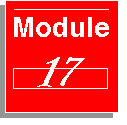
Calculations for Mixing Pesticides
In mixing a finished spray, it is most important to add the correct
amount of pesticide to the mix. Too little may result in a poor job, while too
much may result in injury to the treated surface, illegal residues, or
unnecessary expense. Directions for mixing are given on the label and only very
simple calculations are necessary.
 Would you like to try a study question?
Would you like to try a study question?
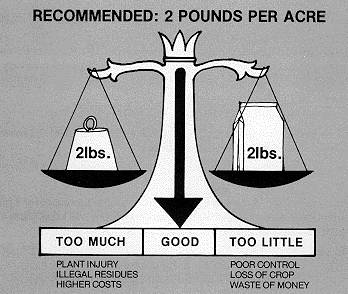
Goals of This Module
- Understand the importance of adding the correct amount of pesticide to a mix.
- Learn to do correct calculations for mixtures of pesticides.
Wettable Powder Mixing
You may be given directions to add 2 pounds of pesticide to 100 gallons of water
and you wish to fill a 300 gallon tank. Since you know that 300 gallons is 3
times 100 gallons, you simply add 3 times 2 pounds, or 6 pounds in 300 gallons.
If you wish to mix only 20 gallons of finished spray, you must use some simple
arithmetic. Follow these steps:
1. Find what part 20 is of 100.
 OR 20 goes into 100 five times.
OR 20 goes into 100 five times.
So 20 gallons is 1/5 of 100 gallons.
2. Therefore, you must add 1/5 of 2 pounds of pesticide to your finished spray.
1 pound contains 16 ounces; 2 pounds contains 32 ounces.

1/5 of 32 oz. = 32 divided by 5 OR 6.4 ounces
Another way to handle the above situation would be to figure that at 2 pounds
per 100 gallons, .2 (two tenths) pounds is required for every 10 gallons.

.2 of 16 ounces = 3.2 ounces, so every 10 gallons requires 3.2 ounces. Twenty
gallons would require 6.4 ounces.
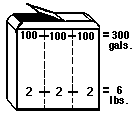
Liquid Mixing
Liquids are mixed in the same manner. If your directions call for 2 pints
emulsifiable concentrate per 100 gallons, 300 gallons will take 6 pints and 20
gallons will take .2 (two tenths) of 2 pints.
Example:
2 pints (1 quart) = 32 fluid ounces.
.2 of 32 = 32 x .2 = 6.4 fluid ounces
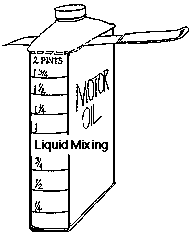
Percentage Mixing
Sometimes you will find directions telling you to make a finished spray of a
specific percentage, for instance, 1% spray for ants. The pesticide may be
formulated as a 57% emulsifiable concentrate. To make a 1% finished spray, you
would add 1 part of pesticide to 56 parts of water. For example, 1 fluid ounce
in 56 fluid ounces (1 3/4 quarts ) of water.
When mixing percentages you should remember that 1 gallon of water weighs about
8.3 pounds and 100 gallons weigh about 830 pounds.* Thus, to make a 1% mix of
pesticide in 100 gallons of water you must add 8.3 pounds of active ingredient
of pesticide to 100 gallons of water. The following formulas may be used for
reference.
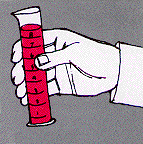
Formula for Wettable Powder Percentage Mixing. To figure the amount of wettable
powder to add to get a given percentage of active ingredient (actual pesticide)
in the tank:

Example
How many pounds of an 80% wettable powder are needed to make 50 gallons of 3.5%
spray for application by mist blower?

calculation result = 18.1 lbs. 80% WP
 Would you like to try a study question?
Would you like to try a study question?
 Would you like to try a study question?
Would you like to try a study question?
 Would you like to try a study question?
Would you like to try a study question?
Formula for Emulsifiable Concentrate Percentage Mixing. To figure amount
of emulsifiable concentrate to add to get a given percentage of active
ingredient (actual pesticide) in the tank.

Example
How many gallons of a 25% emulsifiable concentrate (2 pounds pesticide per
gallon) are needed to make 100 gallons of 1% spray?

calculation result = 4.14 gallons 25% EC
*One gallon of kerosene weighs 6.6 pounds. One hundred gallons weighs 660
pounds.
 Would you like to try a study question?
Would you like to try a study question?
 Would you like to try a study question?
Would you like to try a study question?
Square Feet Mixing Useful Facts to Remember
Often the label will give mixing instructions in terms of quantities of
pesticide to be used per 1000 square feet as in turf treatments, or per acre as
in commercial vegetables. In this case you will have to determine and adjust the
amount of liquid your sprayer applies over a given area. This is called
calibrating the equipment. When the equipment is calibrated you can add the
proper amount of pesticide to give the recommended dosage per area. Calibration
is described in Chapter XIX.
- 1 gallon of water weighs about 8.3 pounds.
- 100 gallons of water weigh about 830 pounds.
- 1 pound = 16 ounces = 453.6 grams.
- 1 pint = 16 fluid ounces = 473 milliliters.
- 1 quart = 32 fluid ounces = 946 milliliters = .946 liters.
- 1 pound wettable powder per 100 gallons = 1 tablespoon per gallon
(approximately).
- 1 pint emulsifiable concentrate per 100 gallons = 1 teaspoon per gallon.
 Would you like to try a study question?
Would you like to try a study question?
 Would you like to try a study question?
Would you like to try a study question?
 Would you like to try a study question?
Would you like to try a study question?
Back to Top